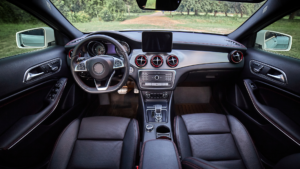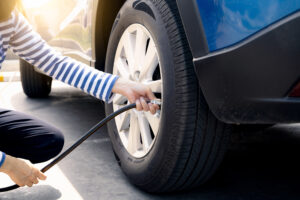So, you are finally ready to move on from your sedan and into an SUV. It’s definitely a big decision and one that I made not too long ago. I started with some quick internet searches for ones that caught my eye while driving and then really went down the rabbit hole of models, features, options, budget and more.
Whether you’re looking for cargo space, something fun to take off road, great MPG, or some combination, you will need to take so much into account that it can definitely be overwhelming. I put together this list of tips for everything that ended up being the most useful and hope they will help you with your SUV buying journey.
1. Figure out what you exactly need
With so many SUV options out there, you should start with narrowing down the list by figuring out exactly what you need. Is cargo space at the top of your list if you have a large family or pets? Or are you looking for something more compact, but big enough for that occasional trip to Home Depot? Or are you just looking for something that drives well on the road, but can be fun for those off-road adventures?
For me, the best way to figure this out was using the 80/20 rule. How do I use my vehicle for the larger 80% of the time? And what am I doing during the other 20% that are absolute must-haves? Once I figured all of this out, I was able cut down the long list to something a bit more manageable.
2. Set a budget that takes all costs into account
The MSRP or sticker price is just the starting point. Dealers like to load up with add-ons like paint protection coating, upgraded wheels, roof racks, and window tinting with very high mark ups. Add in the transaction fees and sales tax and the out the door price is way higher than the sticker price that you see on the car. When I started to break down all the costs, it was crazy to see how the price jumped by many thousands of dollars for things that I did not need nor want to really pay for.
I also financed my SUV purchase and am so glad that I shopped around for the best combination of interest rate, fees, and loan length. Other costs that also need to be taken into account include insurance, fuel costs, and maintenance.
It’s also worth considering whether buying new, used, or certified pre-owned (CPO) is the best bet for you. New cars lose a lot of their value in the first few years while used models typically have the deprecation already baked into the price. The sweet spot for many car buyers is CPO which typically are up to a few years old and have already experienced some or all rapid depreciation. But the main benefits of driving a CPO include manufacturer inspections/reconditioning, at least 50% life or full replacement of wear and tear items like tires and brakes, and extended warranties directly from the manufacturer. CPO was the sweet spot for me, and I could not be happier with that decision.
3. Always prioritize safety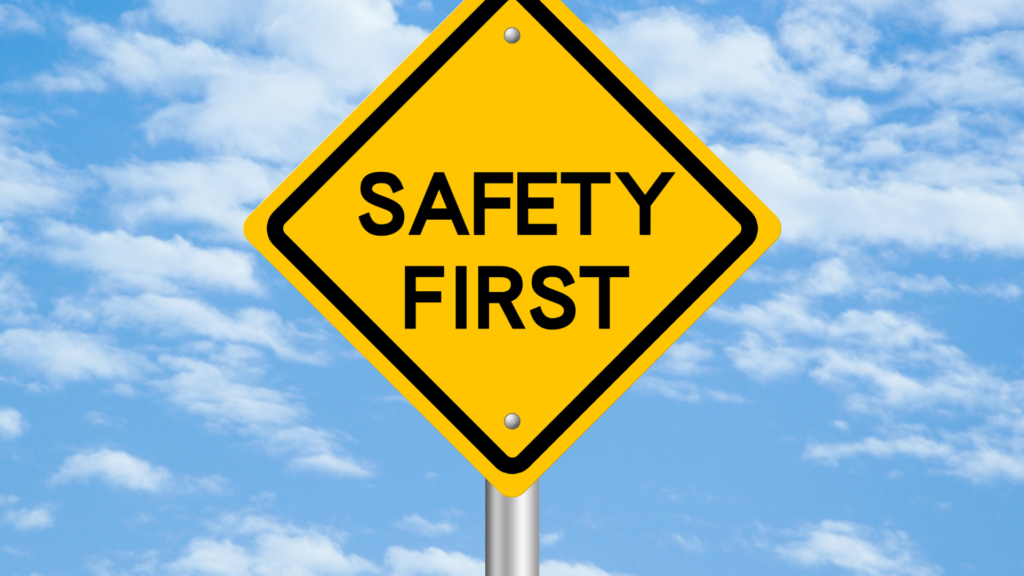
My family includes two active kids and three dogs, so safety was at the top of my list. I quickly figured out that the best information comes from two highly respected organizations. Crash test ratings from the National Highway Traffic Safety Administration and the Insurance Institute for Highway Safety are considered the gold standard because of their rigorous testing and unbiased nature. You might end up being as surprised as I was that even smaller SUVs can have the best crash ratings.
There have also been so many recent advancements in automotive safety. The main ones that I considered were:
- Automatic emergency braking
- Blind-spot monitoring
- Lane-keep assist
- Rear cross-traffic alert
- Adaptive cruise control
Some even offer full seif-driving capabilities and are great if you do a lot of highways driving or take a lot of road trips. Many of these features have been around for a few years so you likely will be able to find them on used and CPO SUVs too.
4. Consider fuel efficiency and costs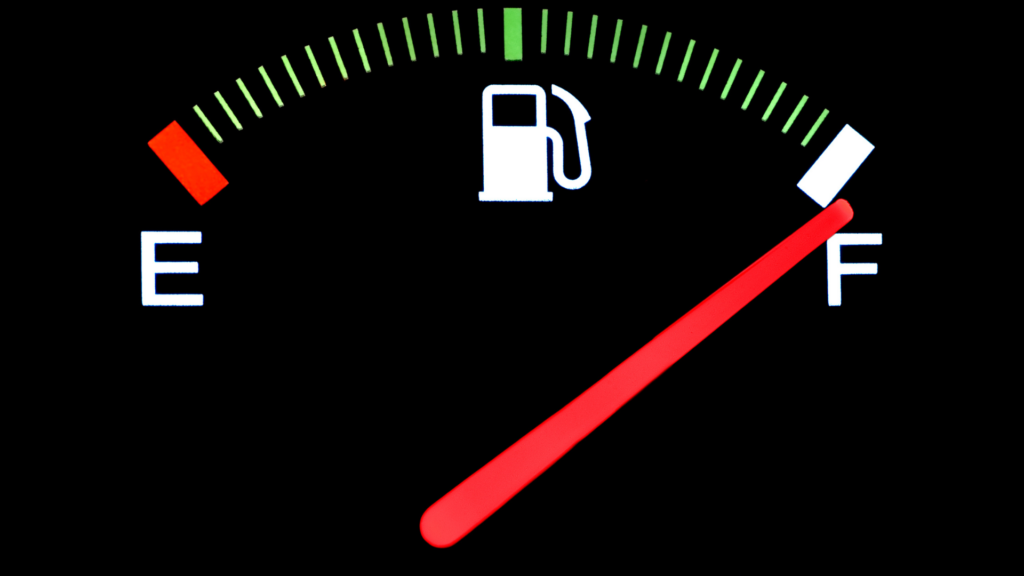
Most people want to spend less money. That is definitely the case for me, so fuel efficiency was also at the top of my list. There are so many options from traditional gas engines, hybrids, plug-in hybrids, fully electric, and other alternative fuel engines like the ones that run on natural gas. While you will need convenient access to the grid for anything requiring a plug or a special fueling station for something like natural gas, the alternative fuel/power infrastructure continues to improve and setting up home charging especially is easier than you might think.
If you typically drive a lot of miles like me, you should seriously consider a hybrid. Hybrids have much better MPG than their gas counterparts and come with the convenience of just needing gas. Hybrids, though, are typically more expensive so high mileage drivers will get the most benefit from the higher MPG. You can also consider plug-in hybrids and fully electric models, but I recommend them only if you are able to get home charging set up. While more public charging stations are popping up every day, they typically run at higher power levels and can wear down your battery faster over time. Plus, who wouldn’t love plugging your SUV in before bed and waking up to a full charge in the morning all in the comfort of your home?
5. Take test drives based on how you typically drive
Before you purchase any vehicle, you really need to take it for a test drive. But not all test drives are created equal, and dealers always have prescribed routes. Before you get to the dealership, check out an online map of the area and chart out a route that mirrors your typical driving behavior.
I spent a good amount of time on both highways and local roads so the routes that I scoped out included a good amount of both. From there, I considered my must and nice-to-haves, and they will be different for everyone. Some of the features to consider include comfortable seats, good visibility, sharp handling, brisk acceleration, easy to use technology, and more. To test some of these features, I accelerated faster than normal (maybe too fast for the salespeople!) and hugged some curves a bit too tightly. But it helped me to understand the flexibility and limits of the vehicles.
Lastly, even if you are set on one specific SUV model, you really should take a couple more test drives just to compare. You might be surprised at what you find.
6. Make sure to evaluate cargo space and interior flexibility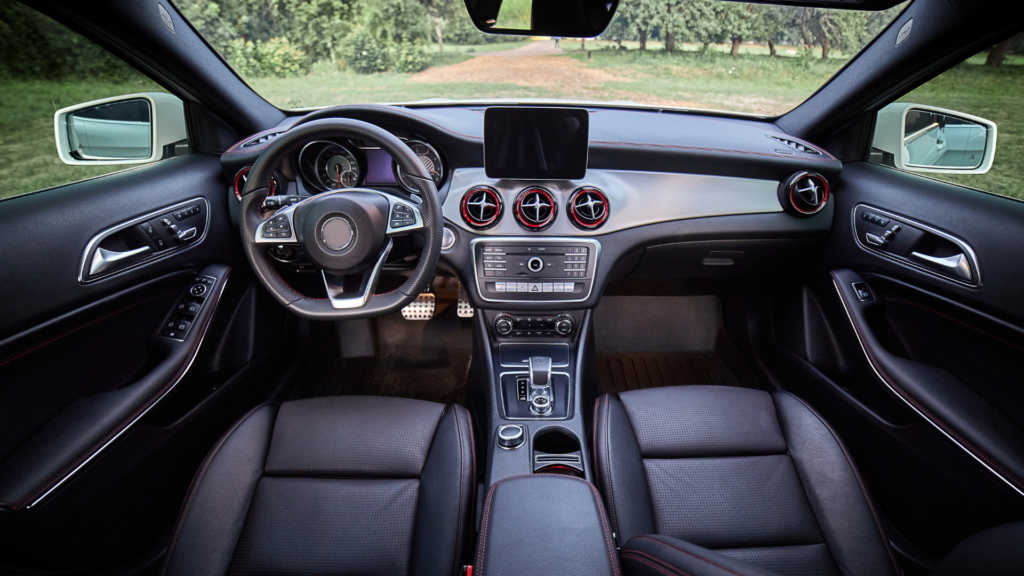
With my two kids and three dogs, cargo space and the flexibility to configure the interior were super important. Since I can’t get my dogs to sit nicely nor in carriers, I had to figure out how to get my kids in seatbelts and my dogs confined to one area if possible.
While only you will know your exact needs, here are some things that I took into account as a starting point.
- I made sure to check the cargo space with the seats up and down.
- I checked to see if the seats could be folded down independently for maximum flexibility for people, pets, and cargo.
A power liftgate was high on my list and especially because most can be opened and closed with the car remote. And if you typically have your hands full, some models even have a sensor under the rear bumper where you can wave your foot and the liftgate opens automatically.

7. Check the towing capacity and off-road capabilities – if you need them
If you need to tow anything for work (equipment) or for leisure (trailers, boats, campers), you need to make sure the SUV has enough towing capacity. Towing anything while being underpowered will make the driving experience difficult and can lead to transmission failure. Instead, make sure that you only look at models that will meet your needs (and maybe even a bit more). The great thing is there are SUV’s for pretty much every towing need.
Even though going off road is typically for leisure, it is sometimes a necessity if you live in a rural area. The roads are pretty much fully paved where I live so this was not that important to me, but I still researched it because nature is really close by. For any off-road adventure, make sure that your SUV has all-wheel drive or 4-wheel drive. If you anticipate rougher terrain, make sure to consider things like skid plates, locking differentials, and special off-road tires.
8. Check resale value and reliability
Even though selling an SUV that you have not purchased yet is likely far from your mind, it is an important factor to consider because some SUVs hold their value much better than others. Historically, brands like Toyota, Honda, and Subaru tend to hold their value better than luxury SUV’s like Mercedes, BMW, or Audi. And as mentioned earlier, buying a used car that has lost a lot of value over the first few years makes it even easier for you to minimize your overall costs over time.
I also found out that reliability often affects resale value. Brands with above average reliability like Toyota, Honda, and Subaru hold their value much higher in the long-term because their low cost of ownership even for older models attracts a wider customer base.
Therefore, if you are looking for an SUV that will be good for you in the long term both financially and with less trips to the service department, make sure to check historical resale values and long-term reliability ratings. You won’t be sorry you did.
So, what did I end up buying?
Even though my SUV buying process took a bit longer than I had originally expected, it was well worth it. Putting everything into consideration, I ended up buying a CPO Toyota Highlander Hybrid. It gives me the perfect balance between my daily commute, hauling my kids and dogs around town, and family road trips. The fuel economy is spectacular for its size, and I drive enough miles to justify the price premium versus the gas model. These tips helped me get into the perfect SUV for me and I hope they will help you with your SUV buying journey.


